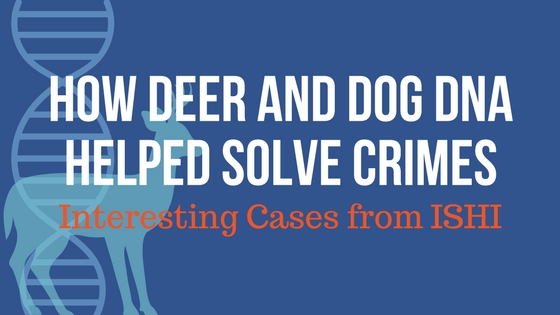In Part I of this series, I conveyed some of the more interesting cases to be presented at the International Symposium on Human Identification. That entry focused on the use of DNA typing to identify human perpetrators. However, amazing work has been done to advance the use of DNA typing to identify animals. In Part II of this series, I will describe some cases that use animal DNA evidence.
Written by: Terri Sundquist, Promega
Typing in Wildlife: Cases from the Great White North
At the 14th International Symposium on Human Identification, Rick Jobin from the Alberta Sustainable Resource Development, Fish and Wildlife Laboratory described a case where the headless carcasses of 11 white-tail deer where found discarded at a local dump. The authorities suspected that one of the local outfitters had poached the deer, mounted the heads as trophies and disposed of the rest of the animals. Following up on a tip, the wildlife officials collected hair samples from a number of preserved heads at one of the local outfitter’s place of business. Analysis of the trophies and carcasses revealed that the DNA matched, and based on that evidence, the owners of the business were charged with their crime.
Every Dog Has Its Day…In Court
At the same symposium, Beth Wictum from the Forensic Unit, Veterinary Genetics Lab, at the University of California, Davis, presented how an unlikely source of DNA helped identify a suspect. In this case, a young woman was working alone in her yard when an unknown but distinctive truck entered her driveway. A suspicious man got out of the truck and approached her, but she was able to reach the safety of her house and call police. Foiled, the potential assailant returned to his truck and left the premises. During this commotion, one of the woman’s dogs urinated on one of the truck tires. Little did the woman know that this would be a key event in later identifying the suspect. Police were able to locate a truck that matched the victim’s description, but even though the truck was distinctive, they could not prove that this specific truck was involved—at least, not without DNA evidence. DNA analysts were able to isolate DNA from the urine on the truck tire and compared it to DNA isolated from the victim’s dog. A match between the two DNA samples allowed police to place that specific truck in the young woman’s driveway and to interrogate the truck’s owner about his intentions that day.
These are just a few more examples of how powerful DNA analysis can be. I look forward to attending future symposia to keep up-to-date with all of the amazing things that forensic analysts will be able to do in the future and sharing that information here. Be sure to register for this year’s meeting in Seattle to see which interesting cases will be presented next!
WOULD YOU LIKE TO SEE MORE ARTICLES LIKE THIS? SUBSCRIBE TO THE ISHI BLOG BELOW!


